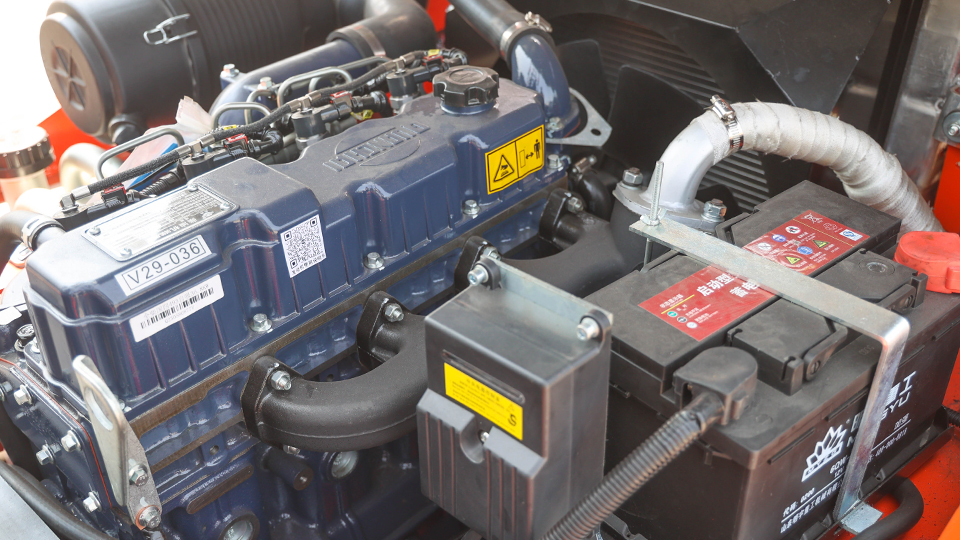
Becoming a Forklift Trainer: A Comprehensive Guide
Becoming a certified forklift trainer is a rewarding career path for individuals with a strong background in forklift operation and a passion for workplace safety. This role is crucial for ensuring that all forklift operators are properly trained and certified to meet regulatory standards, such as those set by the Occupational Safety and Health Administration (OSHA).
Step 1: Meet the Prerequisites
Before you can become a forklift trainer, you must meet several key prerequisites. These ensure you have the necessary foundational knowledge and experience.
Age and Experience: You must be at least 18 years old and have extensive experience as a competent forklift operator. This isn't just about driving; it's about a deep understanding of different forklift types, their functions, and best practices.

Formal Education: While a college degree isn't typically required, a high school diploma or GED is the minimum educational requirement. Some employers may prefer candidates with an associate's degree in a related field, like occupational safety or logistics.
Clean Driving Record: A clean driving record is often a prerequisite, as it demonstrates a commitment to safe operation and responsible conduct.
Step 2: Gain In-Depth Knowledge of Regulations
A successful forklift trainer must be a subject matter expert, especially concerning federal and state safety regulations. Your training will be directly tied to these rules, so you must know them inside and out.
OSHA Standards: The cornerstone of forklift training in the U.S. is OSHA Standard 29 CFR 1910.178. This regulation outlines the requirements for powered industrial truck operator training, including initial training, refresher courses, and evaluations. You must understand the specific requirements for different types of forklifts, like sit-down counterbalanced trucks, reach trucks, and order pickers.
Types of Forklifts: You must be an expert on the various classes of forklifts (Classes 1-7) and the specific hazards and operational nuances associated with each.
Site-Specific Rules: A great trainer also understands how to apply these regulations to a specific workplace, taking into account unique site conditions, pedestrian traffic, and material handling procedures.
Step 3: Complete a Certified "Train the Trainer" Program
This is the most critical step. A "Train the Trainer" course is designed to teach you not only the technical aspects of forklift operation but also the pedagogical skills required to instruct others.
Choosing a Program: Look for programs offered by reputable organizations, such as forklift manufacturers, safety consulting firms, or professional training providers. The program should be comprehensive and cover both theoretical and practical components.
What You'll Learn: These courses typically cover:
Instructional Techniques: How to present information effectively, engage students, and manage a classroom.
Adult Learning Principles: Understanding how adults learn best and adapting your teaching style accordingly.
Developing Training Materials: Creating presentations, handouts, and evaluation checklists.
Practical Evaluation: How to conduct a hands-on driving test and evaluate an operator's competency.
Record-Keeping: The importance of maintaining accurate training records, as required by OSHA.
Step 4: Develop Your Training Skills
Certification is just the beginning. To be an effective trainer, you need to hone your skills continually.
Practice and Refinement: Start by co-teaching with an experienced trainer or conducting mock training sessions. This allows you to get comfortable with the material and the teaching process.
Communication Skills: A good trainer must be an excellent communicator. You need to be able to explain complex safety concepts in simple, clear terms and answer questions effectively. Active listening is also key to understanding an operator's challenges and providing tailored guidance.

Patience and Empathy: Remember that not everyone learns at the same pace. You'll need patience to guide new operators and empathy to understand their apprehension.
Staying Current: The world of safety is always evolving. Regularly review OSHA updates, new equipment technology, and best practices. Attend workshops, webinars, and conferences to keep your knowledge sharp.
Step 5: Secure a Position
Once you've completed your training and feel confident in your abilities, it's time to start your career.
Job Opportunities: Forklift trainers are employed by a wide range of organizations, including manufacturing companies, warehouses, distribution centers, and third-party training companies.
Resume and Portfolio: Highlight your certifications, practical experience, and any specific knowledge you have (e.g., expertise in a particular type of forklift or industry). You may also want to create a portfolio of training materials you've developed.
Continuing Education: Many employers will require you to complete periodic refresher courses to maintain your certification. This is a crucial part of the job and ensures you remain qualified to train others.
Career Outlook and Salary
The demand for qualified forklift operators and trainers remains high due to the constant need for safe and efficient material handling in various industries. The salary for a forklift trainer can vary significantly based on location, experience, and the size of the company. However, it is generally higher than that of a standard forklift operator due to the specialized skills and responsibilities required.
Becoming a forklift trainer is a journey that requires dedication, continuous learning, and a strong commitment to safety. By following these steps, you can position yourself for a successful and impactful career.
Name: selena
Mobile:+86-13176910558
Tel:+86-0535-2090977
Whatsapp:8613181602336
Email:vip@mingyuforklift.com
Add:Xiaqiu Town, Laizhou, Yantai City, Shandong Province, China